Books by Teofil Ivanciuc
Sighetul Marmaţiei. Ghid cultural-turistic
Ce înseamnă Sighetul Maramureşului? O bogată şi zbuciumată istorie multiseculară, care a lăsat ur... more Ce înseamnă Sighetul Maramureşului? O bogată şi zbuciumată istorie multiseculară, care a lăsat urme până-n ziua de azi, uneori palpabile, alteori insesisabile la prima vedere.
The land of Maramureş. Off the beaten path

Vrei să cunoşti rotari, morari, fabricanţi de palincă, cioplitori în lemn, "opincari" sau ţesătoa... more Vrei să cunoşti rotari, morari, fabricanţi de palincă, cioplitori în lemn, "opincari" sau ţesătoare cu fibre vopsite vegetal, în propriile lor ateliere săteşti? Să vezi cum se produce celebrul "clop moroşenesc", cel care a făcut ca localnicii să fie uneori porecliţi "tribul pălăriilor mici"? Să fotografiezi cea mică casă veche locuită din lemn, să afli ce înseamnă rarissimul "diamant de Maramureş", unde se află panta ce sfidează aparent gravitaţia, sau care este pensiunea agroturistică ce îţi oferă cai de călărie? Doreşti cumva să fotografiezi cele mai vechi biserici de lemn din Europa de Sud Est, ori satul unde s-a constituit o "republică independentă" în anul 1919? Să vizitezi o "mănăstire particulară", cea mai înaltă biserică de lemn din lume, sau să subtraversezi munţii printr-o galerie minieră? Să vezi cătune neelectrificate cocoţate la 1000 de metri altitudine, la doi paşi de centrul geografic al Europei? Ai vrea cumva să ştii ce element din înmormântarea din Maramureş este de sorginte păgână, de ce nu divorţează sătenii din Poienile Izei sau cine sunt personajele mitologice "Fata Pădurii", "Balaurul" din lacurile montane, şi înspăimântătorii "Şolomonari"? Unde cresc flori unicat, şi care este muntele ce ascunde o cascadă, un iezer, vreo peşteră sau pisc spectaculos? Răspunsurile la toate aceste întrebări, ca şi la multe altele, le vei afla în paginile de mai jos.

Meşteşuguri tradiţionale din Ţara Maramureşului, by Radu Lazar (photos) and Teofil Ivanciuc (text)
With all the pressure of modernism, Maramures (Transylvania, Romania) remains, probably, the last... more With all the pressure of modernism, Maramures (Transylvania, Romania) remains, probably, the last European bastion of the traditional occupations practiced not for benefit of tourists but for the local communities service.
Today, in Maramures, are still working around 6-700 craftsmen who practice at least 63 traditional occupations. In the present work we are talking about half of them:
-Woodworking (carved, sculpted and carpentry houses, gates with meaningful ornaments and spectacular churches).
-Weaving clothing and interior textiles ( the only place in Europe where we still can find authentic carriers of traditional costumes for winter and for summer, and the interior textiles, carpets from contemporary traditional room, typical for Middle Age)
-Operating traditional riverside installations (flour mills, whirlpools, artisans distilleries and the only carding mills and fulling mills still remaining in Europe)
-The hat making, the small straw hat, a well known local brand, which cannot protect against the rain or sun, but which highlight the pride of being ex-noblemen that local inhabitants claim, some say.
-Making colored leather waistcoats, ornamented with metal buttons and mirrors
-Weaving Baskets from hazel fibres or from willow branches
-Carving funeral crosses (like in the Merry Cemetery)
-Blacksmiths (horseshoes, manufacture and repair tools)
-Pottery (unglazed ceramics, rubbed with river stones in order to reduce the porosity and make it glossy)
-Ritual masks (demonic fur masks used for Winter rituals)
-Manufacturing of the “opinci”: traditional footwear made from two pieces of leather or rubber, sewed like a clog and fixed on the foot with laces.-only place in Europe where they are still worn
-Manufacturers of several types of Bridal crowns and bead necklaces
-Coopers making barrels and kegs mainly used by shepherds.
-Rare and endangered crafts: making pine wood shingles, making wood rigid heddle loom, working and weaving hemp.
Papers by Teofil Ivanciuc

Șoprul și alte structuri pentru fân din Țara Maramureșului
Anuarul Muzeului Etnograif al Transilvaniei, 2020
"The hay barrack and other hay structures from the Land of Maramureș The hay barrack is a un... more "The hay barrack and other hay structures from the Land of Maramureș The hay barrack is a unique structure, consisting of four wooden poles which support a pyramidal roof, which can be raised or lowered, depending on the amount of hay sheltered from the weather. The Land of Maramureș (the northern half of the current Maramureș County), a quite well-known traditional life stronghold, can be considered ”the World’s hay capital”, a place where the hay culture is stronger than anywhere else and where the fields are filled up with ”classic” hay barracks (we estimate that there are probably 10-15,000 structures still left), with tens of thousands hay stacks, with thousands hay barracks with immovable roof and with countless drying hayracks of different types, so many that they change the look of the landscape. Moreover, there is the only place where the hay barracks are still used today exactly as in the Middle Ages (being filled regularly, manually, with traditionally harvested hay), and on a huge scale, not found elsewhere. With prehistoric origins, the most special structure, the hay barrack is considered to have its birthplace in the Netherlands, from where, since the 13th and 14th centuries, it spread over a large part of the continent, a territory bordered by Great Britain, France, Northern Italy, Croatia, Hungary, Northern Transylvania, Ukraine, Russia or Scandinavia. Today, everywhere, the unusual barrack has disappeared, except în Maramureș and the Netherlands - where there is the second largest group of preserved structures, but without being used anymore for storing hay. The study lists the main features of the construction, the villages where the hay barracks survive in more significant number, and it tries to find out the reason why this type of structure still persists so strongly in that region. At the end there are some old images from different places, as well as contemporary photographs taken in Maramureș, featuring various types of hay structures. Keywords: hay barrack, hay stack, hayrack, Maramureș, traditional farming "
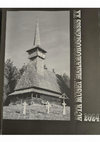
Acta Musei Maramorosiensis, 2024
The Kohanim, meaning the descendants of Aaron from the priestly tribe of Levi, have a number of c... more The Kohanim, meaning the descendants of Aaron from the priestly tribe of Levi, have a number of cultic restrictions, the most important being the prohibition to come into contact with corpses, up to a certain distance.
In the great Jewish cemetery of Sighet, dating back from the mid-18th century, with more than 3,800 graves and tombstones, the two rites existing after the split from the year 1887 have created their own separate access from two different streets.
Later, in order to be able to pray following their perceptions, the Sephardi Kohanim opened a window in the cemetery wall, next to the Ohel where are buried the rabbis from the Kahan and Modern families, and the Hasidic Kohanim built a metal tower from which they can say the prayers, near the Ohels of the Teitelbaum and Stern families.
These two structures are, in any case, if not unique, extremely rare; therefore, preserving them for the future should be a must.
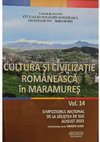
„Cultură și civilizație românească în Maramureș”, XIV, Cluj-Napoca, 2024
Studiul de față analizează două acte emise în anii 1445 respectiv în 1453 în favoarea cnezilor ma... more Studiul de față analizează două acte emise în anii 1445 respectiv în 1453 în favoarea cnezilor maramureșeni de Vișeu, în care aceștia ar fi fost declarați proprietari încă de pe vremea „preasfântului rege Ștefan”, respectiv încă din timpul „sfinților regi adevărați”.
De aici a pornit o adevărată cascadă a afirmaţiilor că maramureşenii ar fi fost înnobilaţi încă din anul 1000, de pe vremea lui Ştefan cel Sfânt şi că aceasta este suprema dovadă că Maramureşul a fost locuit de către proprietari români încă de la începutul mileniului doi.
De fapt, în Maramureș nu poate fi vorba de o donație de moșii sau de vreo recunoaștere a proprietății datând din epocile lui Ștefan I sau Ladislau I, deoarece ținutul a intrat sub control maghiar abia între finele secolului XIII și prima jumătate a secolului XIV.
În urma analizei celor două acte, respectiv a întregului context, considerăm că respectivele documente reprezintă o ficțiune istorică, destinată a le accentua și garanta cnezilor din Vișeu, prin vechimea venerabilă și ilustra ascendență arogată, dreptul de proprietate asupra moșiilor în cauză, drept pus de atâtea ori în pericol de diverși uzurpatori.
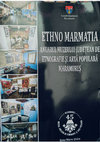
Ethno Marmația, 2024
Cuvinte cheie: Maramureș, biserică de lemn, demolată, dendrocronologie, grajd cu șură
Bârnele un... more Cuvinte cheie: Maramureș, biserică de lemn, demolată, dendrocronologie, grajd cu șură
Bârnele unor vechi biserici de lemn maramureșene care au fost demolate între anii 1889-1947, au fost mai apoi utilizate pentru construirea de școli, case și acareturi gospodărești.
În articol exemplificăm cu bisericile de la: Berbești (construită în 1758, din care s-a păstrat o bârnă), Crăciunești (ridicată în 1710, unde a rămas, in situ, altarul), Hoteni (construită inițial în 1593 într-un alt sat, apoi demolată și transformată în școală la finele secolului XIX, iar ulterior demolată din nou în anii 1990 și practic, pierdută), Nănești (ridicată după anul 1530, ale cărei bârne au devenit mai apoi școală și ulterior grajd, dispărând în anii 2000), Rona de Sus (cea mai puțin cunoscută dintre toate, construită în anii 1640, ale cărei lemn au fost apoi reutilizate pentru ridicarea unei șuri și a unui grajd, ambele construcții existând, miraculos, și azi), Slătioara (construită în 1639, parte a lemnelor sale fiind convertite într-un grajd ale cărui bârne au fost transferate la muzeul din Baia Mare în noiembrie 2023) și Văleni (construită în anul 1521 într-un alt sat, apoi demolată, parte a lemnelor sale devenind grajd cu șură, recuperat și reconstruit destul de recent ca și capelă martor).
Apreciem că astfel de transformări dramatice nu au diminuat valoarea istorică, patrimonială și sentimentală a respectivelor clădiri venerabile care au servit, vreme de secole, ca spații de rugăciune și care ar merita și ar trebui salvate, uneori chiar și numai fragmentar, pentru generațiile următoare.
Summary:
Keywords: Maramureș, wooden church, demolished, dendrochronology, stable
The beams of some of the old wooden churches from Maramures, demolished between the years 1889-1947, were later used to build schools, houses or farm buildings.
We exemplify with the churches of: Berbești (erected in 1758, of which a single beam was preserved), Crăciuneşti (built in 1710, where only the altar has remained, in situ), Hoteni (built in 1593 in another village, then dismantled and transformed in a school at the end of the 19th century, it was demolished in the 90’s and practically lost), Nănești (built after 1530, later became a school and then a stable, but it has disappeared in the 2000’s), Rona de Sus (the most unknown of all, erected in the 1640’s and rebuilt as a stable and a barn, both still existing today), Slătioara (built in 1639, partly converted into a stable which has had its last surviving beams moved to the Baia Mare museum in November 2023) and Văleni (erected in 1521 in another village, later demolished and becoming a stable which has been lucky to be rebuilt quite recently as a small testimonial chapel).
Such dramatic transformations do not diminishes al all the historical, patrimonial or sentimental value of those venerable buildings that have served as places of prayer for centuries and which should and deserve to be preserved, even only partially, for the next generations.
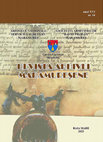
Revista Arhivei Maramureșene, 2023
Maramureșul a fost colonizat, probabil în mai multe etape, cu coloniști maghiari și germani (saxo... more Maramureșul a fost colonizat, probabil în mai multe etape, cu coloniști maghiari și germani (saxoni) aduși de către regele de la Buda.
Prezența cavalerilor teutoni acolo nu se confirmă, presupusa diplomă din anul 1213 dovedindu-se a fi falsă.
Sosirea primului val de nou-veniți (posibil să fi fost mai multe), dinspre Ugocea, pare să se fi petrecut între anii 1272 și 1299, oaspeții fondând sau ocupând, în primul rând grupul de așezări de pe Tisa ce mai târziu vor fi cunoscute sub numele de târguri de coroană: Visk, Hust, Teceu, Câmpulung și Sighet.
În afara dovezilor documentare, din biserica reformată demolată de la Sighet se cunosc numele unui donator german și o serie de 9 inscripții în limba germană, ceea ce dovedește că pe la 1390 saxonii erau, dacă nu dominanți, măcar foarte influenți în reședința comitatului.
Menționați ultima dată ca saxoni în 1453, coloniștii germani din Maramureș au fost maghiarizați treptat până în secolul XVI, ei păstrându-și ulterior doar numele de familie, cu excepția celor din Visk, unde au fost proporțional cei mai numeroși și unde încă mai utilizau un vechi dialect german pe la începutul secolului XVIII.
German settlers from the Medieval Maramureș
Summary
Key words: Maramureș, Germans, Saxons, settlers, Medieval
Maramureș was settled, probably in several phases, by Hungarian and German (Saxon) „guests”, brought there at the king’s request.
The presence of the Teutonic Knights there is not confirmed, the supposed charter from the year 1213 proving to be counterfeit.
The arrival, from Ugocea county, of the first group of migrants (there may have been several waves), seems to have happened between the years 1272 and 1299, the „guests” founding or occupying first, the group of settlements on the Tisa that would later be known as Royal market towns: Visk, Hust, Teceu, Câmpulung and Sighet.
Apart from the records evidence, the name of a German donor and a series of 9 inscriptions in German language, dating back in 1390, are known from the demolished reformed church of Sighet, proving that at that time the Saxons were, if not dominant, at least very influential in town.
Last mentioned under the name of Saxons in 1453, the German settlers of Maramureș were gradually Hungarised until the 16th century, subsequently retaining only their original surnames, except for those of Visk, where they were proportionally the most numerous and where they still used an old German dialect even at the beginning of the 18th century.
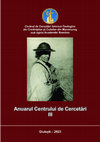
Anuarul Centrului de Cercetări Giulești, 2023
Key words: shepherding, Prehistory, Maramureș, Palinology, the „living fire”, Tally stick, abri, ... more Key words: shepherding, Prehistory, Maramureș, Palinology, the „living fire”, Tally stick, abri, ritualic sacrifice
The paper mentions, briefly: the very early existence of the shepherding in Maramureș (5-7000 years ago), proven with the help of the Palynology, the techniques used by the shepherds of obtaining the „living fire”, the making and the use, even today, of the rope made from wood fibers or grass, the Tally stick, the abri and the stone huts inhabited up to not very long time ago by the shepherds, the sheep shearing scissors, of Celtic type and frequently used even today, the magical ritual of sticking the ax into the ground, still practiced now, respectively the ritual sacrifices of sheep, proven only archaeologically.
Cuvinte cheie: păstorit, Preistorie, Maramureș, Palinologie, „focul viu”, carâmb, abri, sacrificiu ritualic
Lucrarea menționează, pe scurt: existența foarte timpurie a păstoritului în Maramureș (acum 5-7000 de ani), dovedită cu ajutorul palinologiei, tehnicile folosite de către păstori pentru obținerea „focului viu”, realizarea și utilizarea și astăzi a curmeielor din fibre de lemn sau din iarbă, „carâmbul” (răbojul) pentru măsurarea laptelui, abriul și colibele de piatră folosite până nu cu foarte mult timp în urmă de către păstori, foarfecele de tuns oile, de tip celtic și frecvent folosite și astăzi, ritualul apotropaic al înfiptului securii în pământ, practicat și acum, respectiv sacrificiile rituale ale oilor, dovedite doar arheologic.

Marmația, 2022
Key words: Roman coin, Maramures, Magnentius, IV century, Barbaricum
On the mountains near Sighe... more Key words: Roman coin, Maramures, Magnentius, IV century, Barbaricum
On the mountains near Sighetu-Marmaţiei, the place called Piatra Tisei, a bronze coin issued by Roman emperor Magnentius was discovered in the year 2016. The coin was struck at Treveri (today Trier, in Germany) in the year 352, and is held in a private collection. The coin is a rare find on Upper Tisa Valley, especially in Maramureş, where so far are known only 12 such coin discoveries related for IV century (but just for two of them we know the name of the finding place) and a sole human habitation: Sarasău - Zăpodie. In the southern part of Maramureş county, a single IV century coin was found, but the number of known inhabited settlements is far larger. Our paper enumerates also the settlements and coin discoveries from II-IV centuries from the Southern and Northern Maramureş.
În anul 2016, în munții de lângă Sighetu Marmației, în locul numit Piatra Tisei a fost descoperită o monedă de bronz emisă de împăratul roman Magnentius. Moneda a fost emisă la Treveri (azi Trier, în Germania) în anul 352 și este păstrată într-o colecție particulară. Piesa reprezintă o descoperire rară pentru Tisa Superioară, mai ales pentru Maramureș, unde până acum au fost descoperite numai 12 monede de secol IV (dintre care doar pentru două se cunoaște locul descoperirii) și o singură locuire certă : Sarasău-Zăpodie. În sudul actualului județ Maramureș a fost găsită o singură monedă de secol IV, însă numărul așezărilor din acea perioadă este mult mai ridicat. Articolul enumeră și locuirile și descoperirile monetare din secolele II-IV din Maramureșul de sud și de nord.

Buletin Științific. Fascicula Filologie, 2022
Articolul prezintă o atestare a limbii române datând din anul 1411, surprinsă într-o diplomă medi... more Articolul prezintă o atestare a limbii române datând din anul 1411, surprinsă într-o diplomă medievală publicată acum peste un secol însă neglijată de către istorici. Foarte plauzibil, aceasta reprezintă cea de-a treia veche mențiune de acest fel, după altele din anii 1364 și 1396.
Articolul enumeră cele mai vechi atestări ale românilor din Transilvania, primele mențiuni clare ale românilor în Maramureș și cele mai vechi cuvinte românești presărate prin diplomele medievale de aici.
Actul din 1411 este cunoscut în mai multe variante emise de către regele Sigismund și Conventul din Lelesz. Din nefericire, cele mai multe diplome maramureșene au rămas nepublicate, în timp ce altele au fost editate în mod repetat.
Cât privește etimologia numelui piscului menționat în actul din 1411 (”Gocon”), se întrezăresc cel puțin două soluții: ar putea fi vorba fie de gorun, fie de cer, ambele specii de stejar fiind prezente în acea parte de Maramureș.
The paper presents an early mention of Romanian language, dating back in 1411, emanated from a medieval charter published a century ago, but neglected so far by other historians. Very plausible, this is the third oldest such a mention, after ones from the years 1364 and 1396.
The article enumerates the oldest known records about Romanians from Transylvania, the first clear attestations of Romanians in Maramureş County and some very early Romanian words spread across medieval royal charters. There are some other bilingual translations known from some Transylvanian and Maramureş medieval documents.
The 1411 record is known in several versions, which were issued by the king Sigismund and by Lelesz Convent. Unfortunately, most of Maramureş charters remain unknown and unpublished, but some of them have been edited repeatedly.
The peak name etymology has at least two solutions: the word means or the Sessile oak or the Turkey oak, both species being found on that part of Maramureş.
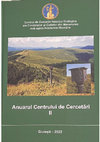
Anuarul Centrului de Cercetări Giulești, 2022
The Maramures’s Bucovina (from Northern Romania), i.e. sectors of the Țibău and Golden Bistrița r... more The Maramures’s Bucovina (from Northern Romania), i.e. sectors of the Țibău and Golden Bistrița rivers basins, comprising 17,000 ha of forests and valuable alpine pastures, necessary for the large number of sheep, was occupied by the Maramureș people, taking advantage of the desolation and incredible wildness of the place, between the years 1373-1505, the Moldavians protesting against it in the 17th century, when they remember that part of these mountains were given by Stephen the Great to Putna monastery (sometimes in the 15th century).
In 1950, a third of this sector’s surface was offered to Suceava county, through the intervention of the communist leader Emil Bodnăraș, but, however, the entire area is grazed today by the sheeps owned by the residents of Maramures (mainly from the upper Iza and Vișeu valleys), who still own numerous properties in that area.

Revista Arhivei Maramureșene, 2022
Keywords: Maramureș, nobility, aristocracy, coat of arms, demographics, manor houses, costumes, n... more Keywords: Maramureș, nobility, aristocracy, coat of arms, demographics, manor houses, costumes, noble status.
The study presents some aspects of the history of the Maramures nobility, the most numerous in the Kingdom of Hungary and, later, of the Principality of Transylvania and the Habsburg Empire.
One of the oldest in the region (the first local nobles being attested here in the second decade of the fourteenth century), the County nobility was made up predominantly of Romanians (of predominantly Orthodox religion and, later, Greek-Catholic), followed by the Hungarians (initially Calvinists and then also Roman Catholics) and other nations.
The total number of Maramures nobles reached about 30,000 at its peak. The character of the ”noble county” of Maramureș was given, in a proportion of over two thirds, by the small Romanian nobles, coming from the approx. 280 "ancient" families (attested before 1550), who where the ancestors of the others.
There were two main noble categories: donors, ie old nobles, landowners and tax-exempt (mostly of them being Romanians living in villages), and ”armalists” - owning only the coat of arms but not any piece of land, the last ones being mainly Hungarian speakers from the crown towns.
So far, we have found only 36 aristocratic families in the county (23 counts and 13 barons), of which just 3 were local ones (2 Hungarians of Romanian origin and 1 Jew), plus those who entered this class by marriage.
The nobles of Maramureș obtained their status as warriors, having a formidable bravery, proven in countless fights in the service of the Hungarian kings, Transylvanian princes and Austrian emperors.
Although so long attested, they were quite poor, living usually, like the peasants, in wooden houses, very few owning stone mansions and only one having a real castle. They were different from the mass by certain elements of the worn dress. Their modesty came mainly from a local custom, which meant the division of wealth (and title) in equal parts between all the sons of the family, not favoring only the firstborn, as in other countries.
The small nobility lost their privileges in 1848, and the aristocracy in 1919.
The following nobles list, still partial, includes 1623 surnames and their variants, both of Maramures local families (960 names, of which 659 are Romanian and 301 - Hungarians, Austrians, etc.), as well as nobles who came from other places, especially after the years 1700’s (663 family names).
Familia română, 2021
Nicăieri pe mapamondul ultimilor 30 de ani nu s-au ridicat mai multe - și mai înalte - biserici n... more Nicăieri pe mapamondul ultimilor 30 de ani nu s-au ridicat mai multe - și mai înalte - biserici noi de lemn ca în Țara Maramureșului românesc (la nivelul anului 2020 acestea erau 50 la număr, fără a socoti capelele), practic în același stil precum monumentele protejate de UNESCO, într-o adevărată efervescență creatoare, care dă de lucru mai multor echipe de constructori de biserici.
Constatăm că în Maramureș se petrece azi, la o scară mult mai modestă, desigur, ceea ce s-a întâmplat în Occident acum 700 de ani. Istoria se repetă, le place multora să spună. Atât doar că, dacă vesticii au fost cu piatra, maramureșenii țin cu lemnul.
Așadar, cele mai înalte biserici de lemn din lume se află azi în nordul României, 7 dintre primele 10 aflându-se chiar în județul Maramureș.
Acta Musei Maramorosiensis, 2020
Înainte de toate, avem dovada esențială și incontestabilă, conform căreia, în anii 1962-1963, pe ... more Înainte de toate, avem dovada esențială și incontestabilă, conform căreia, în anii 1962-1963, pe când subdialectul maramureșan se păstra încă în forme pure, necontaminat de neologisme, la momentul anchetelor din teren pentru realizarea “Atlasului Lingvistic Român“ editat de Academia Română, ambii termeni utilizați pentru denominarea locuitorilor Ţării Maramureşului chiar de către ei înșiși – "moroșan" și "maramureșean", erau consideraţi a fi perfect corecţi, aceștia fiind, în plus, clar delimitați geografic.
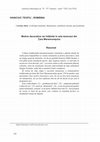
Memoria Ethnologica, 2021
Cultura tradiţională maramureşeană a lemnului a păstrat destul de multe piese împodobite cu varia... more Cultura tradiţională maramureşeană a lemnului a păstrat destul de multe piese împodobite cu variate ornamente şi motive decorative, însă un singur grup de elemente, cel de pe portalul bisericii Sârbi-Susani, a fost până acum interpretat precis: spre surpriza tuturor, s-a dovedit că acesta nu a fost decorat "sec", cu rozete solare şi alte ornamente plăcute ochiului, suita de ornamente incizate reprezentând de fapt calendarul liturgic bizantin, redat într-o manieră foarte complexă. În textul de faţă, după o succintă enumerare a ornamentelor tradiţionale pe lemn din Ţara Maramureşului (peste 130 la număr), sunt prezentate cinci motive decorative care, fie nu au fost încă remarcate ori interpretate, fie au fost explicate într-un alt fel decât cel pe care îl propunem aici. Este vorba despre: (1)-"jumătatea de disc", (2)-"amprenta palmară a labei de urs", (3)-motivul "balaurului", (4)-cvasi-necunoscuta pasăre mitică denumită "totoina" şi un motiv întâlnit frecvent (5)-succesiunea de rozete şi funii de pe porţi, care credem că seamănă perfect cu stindardul roman de legiune.
.
The traditional wooden culture of Maramureş has preserved quite many pieces adorned with various ornaments and decorative motifs, but a single group of elements, the one carved on the portal of the Sârbi-Susani old church, has been explained, so far: to everyone's surprise, it turned out it was not at all a plain decoration designed to please the eye, but the suite of incised solar rosettes and other ornaments, represents actually the Byzantine liturgical calendar, figured in a very complex manner!
This paper, after a brief list of the traditional wood ornaments from the Land of Maramureş (which counts over 130 different motifs), describes 5 decorative symbols which, either have not been yet noticed or explained, or have previously been explained in a different way than the one we propose.
These motifs are: (1) - "the half a disc", (2) - "the brown bear's footprint", (3) -the "dragon" motif, (4) - the virtually unknown mythical bird named "totoina" and a more common one (5) - the succession of rosettes and ropes on the gates, which perfectly resembles a Roman legion standard.
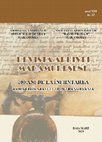
Revista Arhivei Maramuresene, 2020
The first part of the study analyzes the situation of previously published Maramures medieval doc... more The first part of the study analyzes the situation of previously published Maramures medieval documents issued before 1541, estimating that, out of the probable total number of 2-3000 units, about 800 have been published so far, highlighting the contribution of Ioan Mihalyi de Apsa and the Sighetu’s archivist Petrovay György, as well as the importance of the volume of documents from the Teleki archive, which includes 162 Maramures charters unpublished before.
Among the archival funds preserving Maramures charters, the most valuable are those from the Hungarian National Archives (MOL), the former Reformed High School of Sighet fund - located today in Debrecen, the archive of the Lelesz Convent from Slovakia, and the County Direc-torates of National Archives from Baia Mare and Cluj-Napoca.
The second part of our paper talks about a valuable archive but lost forever (preserved today only as photocopies), the Barabás Samu fund, consisting of 71 documents relating to Hungary, Transylvania and Maramureş (23 units from the last province), dated between the years 1278-1523. From this fund, kept at the Romanian Academy Library in Cluj-Napoca, only a few documents have been published so far.









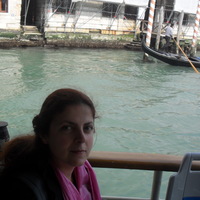

Uploads
Books by Teofil Ivanciuc
Today, in Maramures, are still working around 6-700 craftsmen who practice at least 63 traditional occupations. In the present work we are talking about half of them:
-Woodworking (carved, sculpted and carpentry houses, gates with meaningful ornaments and spectacular churches).
-Weaving clothing and interior textiles ( the only place in Europe where we still can find authentic carriers of traditional costumes for winter and for summer, and the interior textiles, carpets from contemporary traditional room, typical for Middle Age)
-Operating traditional riverside installations (flour mills, whirlpools, artisans distilleries and the only carding mills and fulling mills still remaining in Europe)
-The hat making, the small straw hat, a well known local brand, which cannot protect against the rain or sun, but which highlight the pride of being ex-noblemen that local inhabitants claim, some say.
-Making colored leather waistcoats, ornamented with metal buttons and mirrors
-Weaving Baskets from hazel fibres or from willow branches
-Carving funeral crosses (like in the Merry Cemetery)
-Blacksmiths (horseshoes, manufacture and repair tools)
-Pottery (unglazed ceramics, rubbed with river stones in order to reduce the porosity and make it glossy)
-Ritual masks (demonic fur masks used for Winter rituals)
-Manufacturing of the “opinci”: traditional footwear made from two pieces of leather or rubber, sewed like a clog and fixed on the foot with laces.-only place in Europe where they are still worn
-Manufacturers of several types of Bridal crowns and bead necklaces
-Coopers making barrels and kegs mainly used by shepherds.
-Rare and endangered crafts: making pine wood shingles, making wood rigid heddle loom, working and weaving hemp.
Papers by Teofil Ivanciuc
In the great Jewish cemetery of Sighet, dating back from the mid-18th century, with more than 3,800 graves and tombstones, the two rites existing after the split from the year 1887 have created their own separate access from two different streets.
Later, in order to be able to pray following their perceptions, the Sephardi Kohanim opened a window in the cemetery wall, next to the Ohel where are buried the rabbis from the Kahan and Modern families, and the Hasidic Kohanim built a metal tower from which they can say the prayers, near the Ohels of the Teitelbaum and Stern families.
These two structures are, in any case, if not unique, extremely rare; therefore, preserving them for the future should be a must.
De aici a pornit o adevărată cascadă a afirmaţiilor că maramureşenii ar fi fost înnobilaţi încă din anul 1000, de pe vremea lui Ştefan cel Sfânt şi că aceasta este suprema dovadă că Maramureşul a fost locuit de către proprietari români încă de la începutul mileniului doi.
De fapt, în Maramureș nu poate fi vorba de o donație de moșii sau de vreo recunoaștere a proprietății datând din epocile lui Ștefan I sau Ladislau I, deoarece ținutul a intrat sub control maghiar abia între finele secolului XIII și prima jumătate a secolului XIV.
În urma analizei celor două acte, respectiv a întregului context, considerăm că respectivele documente reprezintă o ficțiune istorică, destinată a le accentua și garanta cnezilor din Vișeu, prin vechimea venerabilă și ilustra ascendență arogată, dreptul de proprietate asupra moșiilor în cauză, drept pus de atâtea ori în pericol de diverși uzurpatori.
Bârnele unor vechi biserici de lemn maramureșene care au fost demolate între anii 1889-1947, au fost mai apoi utilizate pentru construirea de școli, case și acareturi gospodărești.
În articol exemplificăm cu bisericile de la: Berbești (construită în 1758, din care s-a păstrat o bârnă), Crăciunești (ridicată în 1710, unde a rămas, in situ, altarul), Hoteni (construită inițial în 1593 într-un alt sat, apoi demolată și transformată în școală la finele secolului XIX, iar ulterior demolată din nou în anii 1990 și practic, pierdută), Nănești (ridicată după anul 1530, ale cărei bârne au devenit mai apoi școală și ulterior grajd, dispărând în anii 2000), Rona de Sus (cea mai puțin cunoscută dintre toate, construită în anii 1640, ale cărei lemn au fost apoi reutilizate pentru ridicarea unei șuri și a unui grajd, ambele construcții existând, miraculos, și azi), Slătioara (construită în 1639, parte a lemnelor sale fiind convertite într-un grajd ale cărui bârne au fost transferate la muzeul din Baia Mare în noiembrie 2023) și Văleni (construită în anul 1521 într-un alt sat, apoi demolată, parte a lemnelor sale devenind grajd cu șură, recuperat și reconstruit destul de recent ca și capelă martor).
Apreciem că astfel de transformări dramatice nu au diminuat valoarea istorică, patrimonială și sentimentală a respectivelor clădiri venerabile care au servit, vreme de secole, ca spații de rugăciune și care ar merita și ar trebui salvate, uneori chiar și numai fragmentar, pentru generațiile următoare.
Summary:
Keywords: Maramureș, wooden church, demolished, dendrochronology, stable
The beams of some of the old wooden churches from Maramures, demolished between the years 1889-1947, were later used to build schools, houses or farm buildings.
We exemplify with the churches of: Berbești (erected in 1758, of which a single beam was preserved), Crăciuneşti (built in 1710, where only the altar has remained, in situ), Hoteni (built in 1593 in another village, then dismantled and transformed in a school at the end of the 19th century, it was demolished in the 90’s and practically lost), Nănești (built after 1530, later became a school and then a stable, but it has disappeared in the 2000’s), Rona de Sus (the most unknown of all, erected in the 1640’s and rebuilt as a stable and a barn, both still existing today), Slătioara (built in 1639, partly converted into a stable which has had its last surviving beams moved to the Baia Mare museum in November 2023) and Văleni (erected in 1521 in another village, later demolished and becoming a stable which has been lucky to be rebuilt quite recently as a small testimonial chapel).
Such dramatic transformations do not diminishes al all the historical, patrimonial or sentimental value of those venerable buildings that have served as places of prayer for centuries and which should and deserve to be preserved, even only partially, for the next generations.
Prezența cavalerilor teutoni acolo nu se confirmă, presupusa diplomă din anul 1213 dovedindu-se a fi falsă.
Sosirea primului val de nou-veniți (posibil să fi fost mai multe), dinspre Ugocea, pare să se fi petrecut între anii 1272 și 1299, oaspeții fondând sau ocupând, în primul rând grupul de așezări de pe Tisa ce mai târziu vor fi cunoscute sub numele de târguri de coroană: Visk, Hust, Teceu, Câmpulung și Sighet.
În afara dovezilor documentare, din biserica reformată demolată de la Sighet se cunosc numele unui donator german și o serie de 9 inscripții în limba germană, ceea ce dovedește că pe la 1390 saxonii erau, dacă nu dominanți, măcar foarte influenți în reședința comitatului.
Menționați ultima dată ca saxoni în 1453, coloniștii germani din Maramureș au fost maghiarizați treptat până în secolul XVI, ei păstrându-și ulterior doar numele de familie, cu excepția celor din Visk, unde au fost proporțional cei mai numeroși și unde încă mai utilizau un vechi dialect german pe la începutul secolului XVIII.
German settlers from the Medieval Maramureș
Summary
Key words: Maramureș, Germans, Saxons, settlers, Medieval
Maramureș was settled, probably in several phases, by Hungarian and German (Saxon) „guests”, brought there at the king’s request.
The presence of the Teutonic Knights there is not confirmed, the supposed charter from the year 1213 proving to be counterfeit.
The arrival, from Ugocea county, of the first group of migrants (there may have been several waves), seems to have happened between the years 1272 and 1299, the „guests” founding or occupying first, the group of settlements on the Tisa that would later be known as Royal market towns: Visk, Hust, Teceu, Câmpulung and Sighet.
Apart from the records evidence, the name of a German donor and a series of 9 inscriptions in German language, dating back in 1390, are known from the demolished reformed church of Sighet, proving that at that time the Saxons were, if not dominant, at least very influential in town.
Last mentioned under the name of Saxons in 1453, the German settlers of Maramureș were gradually Hungarised until the 16th century, subsequently retaining only their original surnames, except for those of Visk, where they were proportionally the most numerous and where they still used an old German dialect even at the beginning of the 18th century.
The paper mentions, briefly: the very early existence of the shepherding in Maramureș (5-7000 years ago), proven with the help of the Palynology, the techniques used by the shepherds of obtaining the „living fire”, the making and the use, even today, of the rope made from wood fibers or grass, the Tally stick, the abri and the stone huts inhabited up to not very long time ago by the shepherds, the sheep shearing scissors, of Celtic type and frequently used even today, the magical ritual of sticking the ax into the ground, still practiced now, respectively the ritual sacrifices of sheep, proven only archaeologically.
Cuvinte cheie: păstorit, Preistorie, Maramureș, Palinologie, „focul viu”, carâmb, abri, sacrificiu ritualic
Lucrarea menționează, pe scurt: existența foarte timpurie a păstoritului în Maramureș (acum 5-7000 de ani), dovedită cu ajutorul palinologiei, tehnicile folosite de către păstori pentru obținerea „focului viu”, realizarea și utilizarea și astăzi a curmeielor din fibre de lemn sau din iarbă, „carâmbul” (răbojul) pentru măsurarea laptelui, abriul și colibele de piatră folosite până nu cu foarte mult timp în urmă de către păstori, foarfecele de tuns oile, de tip celtic și frecvent folosite și astăzi, ritualul apotropaic al înfiptului securii în pământ, practicat și acum, respectiv sacrificiile rituale ale oilor, dovedite doar arheologic.
On the mountains near Sighetu-Marmaţiei, the place called Piatra Tisei, a bronze coin issued by Roman emperor Magnentius was discovered in the year 2016. The coin was struck at Treveri (today Trier, in Germany) in the year 352, and is held in a private collection. The coin is a rare find on Upper Tisa Valley, especially in Maramureş, where so far are known only 12 such coin discoveries related for IV century (but just for two of them we know the name of the finding place) and a sole human habitation: Sarasău - Zăpodie. In the southern part of Maramureş county, a single IV century coin was found, but the number of known inhabited settlements is far larger. Our paper enumerates also the settlements and coin discoveries from II-IV centuries from the Southern and Northern Maramureş.
În anul 2016, în munții de lângă Sighetu Marmației, în locul numit Piatra Tisei a fost descoperită o monedă de bronz emisă de împăratul roman Magnentius. Moneda a fost emisă la Treveri (azi Trier, în Germania) în anul 352 și este păstrată într-o colecție particulară. Piesa reprezintă o descoperire rară pentru Tisa Superioară, mai ales pentru Maramureș, unde până acum au fost descoperite numai 12 monede de secol IV (dintre care doar pentru două se cunoaște locul descoperirii) și o singură locuire certă : Sarasău-Zăpodie. În sudul actualului județ Maramureș a fost găsită o singură monedă de secol IV, însă numărul așezărilor din acea perioadă este mult mai ridicat. Articolul enumeră și locuirile și descoperirile monetare din secolele II-IV din Maramureșul de sud și de nord.
Articolul enumeră cele mai vechi atestări ale românilor din Transilvania, primele mențiuni clare ale românilor în Maramureș și cele mai vechi cuvinte românești presărate prin diplomele medievale de aici.
Actul din 1411 este cunoscut în mai multe variante emise de către regele Sigismund și Conventul din Lelesz. Din nefericire, cele mai multe diplome maramureșene au rămas nepublicate, în timp ce altele au fost editate în mod repetat.
Cât privește etimologia numelui piscului menționat în actul din 1411 (”Gocon”), se întrezăresc cel puțin două soluții: ar putea fi vorba fie de gorun, fie de cer, ambele specii de stejar fiind prezente în acea parte de Maramureș.
The paper presents an early mention of Romanian language, dating back in 1411, emanated from a medieval charter published a century ago, but neglected so far by other historians. Very plausible, this is the third oldest such a mention, after ones from the years 1364 and 1396.
The article enumerates the oldest known records about Romanians from Transylvania, the first clear attestations of Romanians in Maramureş County and some very early Romanian words spread across medieval royal charters. There are some other bilingual translations known from some Transylvanian and Maramureş medieval documents.
The 1411 record is known in several versions, which were issued by the king Sigismund and by Lelesz Convent. Unfortunately, most of Maramureş charters remain unknown and unpublished, but some of them have been edited repeatedly.
The peak name etymology has at least two solutions: the word means or the Sessile oak or the Turkey oak, both species being found on that part of Maramureş.
In 1950, a third of this sector’s surface was offered to Suceava county, through the intervention of the communist leader Emil Bodnăraș, but, however, the entire area is grazed today by the sheeps owned by the residents of Maramures (mainly from the upper Iza and Vișeu valleys), who still own numerous properties in that area.
The study presents some aspects of the history of the Maramures nobility, the most numerous in the Kingdom of Hungary and, later, of the Principality of Transylvania and the Habsburg Empire.
One of the oldest in the region (the first local nobles being attested here in the second decade of the fourteenth century), the County nobility was made up predominantly of Romanians (of predominantly Orthodox religion and, later, Greek-Catholic), followed by the Hungarians (initially Calvinists and then also Roman Catholics) and other nations.
The total number of Maramures nobles reached about 30,000 at its peak. The character of the ”noble county” of Maramureș was given, in a proportion of over two thirds, by the small Romanian nobles, coming from the approx. 280 "ancient" families (attested before 1550), who where the ancestors of the others.
There were two main noble categories: donors, ie old nobles, landowners and tax-exempt (mostly of them being Romanians living in villages), and ”armalists” - owning only the coat of arms but not any piece of land, the last ones being mainly Hungarian speakers from the crown towns.
So far, we have found only 36 aristocratic families in the county (23 counts and 13 barons), of which just 3 were local ones (2 Hungarians of Romanian origin and 1 Jew), plus those who entered this class by marriage.
The nobles of Maramureș obtained their status as warriors, having a formidable bravery, proven in countless fights in the service of the Hungarian kings, Transylvanian princes and Austrian emperors.
Although so long attested, they were quite poor, living usually, like the peasants, in wooden houses, very few owning stone mansions and only one having a real castle. They were different from the mass by certain elements of the worn dress. Their modesty came mainly from a local custom, which meant the division of wealth (and title) in equal parts between all the sons of the family, not favoring only the firstborn, as in other countries.
The small nobility lost their privileges in 1848, and the aristocracy in 1919.
The following nobles list, still partial, includes 1623 surnames and their variants, both of Maramures local families (960 names, of which 659 are Romanian and 301 - Hungarians, Austrians, etc.), as well as nobles who came from other places, especially after the years 1700’s (663 family names).
Constatăm că în Maramureș se petrece azi, la o scară mult mai modestă, desigur, ceea ce s-a întâmplat în Occident acum 700 de ani. Istoria se repetă, le place multora să spună. Atât doar că, dacă vesticii au fost cu piatra, maramureșenii țin cu lemnul.
Așadar, cele mai înalte biserici de lemn din lume se află azi în nordul României, 7 dintre primele 10 aflându-se chiar în județul Maramureș.
.
The traditional wooden culture of Maramureş has preserved quite many pieces adorned with various ornaments and decorative motifs, but a single group of elements, the one carved on the portal of the Sârbi-Susani old church, has been explained, so far: to everyone's surprise, it turned out it was not at all a plain decoration designed to please the eye, but the suite of incised solar rosettes and other ornaments, represents actually the Byzantine liturgical calendar, figured in a very complex manner!
This paper, after a brief list of the traditional wood ornaments from the Land of Maramureş (which counts over 130 different motifs), describes 5 decorative symbols which, either have not been yet noticed or explained, or have previously been explained in a different way than the one we propose.
These motifs are: (1) - "the half a disc", (2) - "the brown bear's footprint", (3) -the "dragon" motif, (4) - the virtually unknown mythical bird named "totoina" and a more common one (5) - the succession of rosettes and ropes on the gates, which perfectly resembles a Roman legion standard.
Among the archival funds preserving Maramures charters, the most valuable are those from the Hungarian National Archives (MOL), the former Reformed High School of Sighet fund - located today in Debrecen, the archive of the Lelesz Convent from Slovakia, and the County Direc-torates of National Archives from Baia Mare and Cluj-Napoca.
The second part of our paper talks about a valuable archive but lost forever (preserved today only as photocopies), the Barabás Samu fund, consisting of 71 documents relating to Hungary, Transylvania and Maramureş (23 units from the last province), dated between the years 1278-1523. From this fund, kept at the Romanian Academy Library in Cluj-Napoca, only a few documents have been published so far.
Today, in Maramures, are still working around 6-700 craftsmen who practice at least 63 traditional occupations. In the present work we are talking about half of them:
-Woodworking (carved, sculpted and carpentry houses, gates with meaningful ornaments and spectacular churches).
-Weaving clothing and interior textiles ( the only place in Europe where we still can find authentic carriers of traditional costumes for winter and for summer, and the interior textiles, carpets from contemporary traditional room, typical for Middle Age)
-Operating traditional riverside installations (flour mills, whirlpools, artisans distilleries and the only carding mills and fulling mills still remaining in Europe)
-The hat making, the small straw hat, a well known local brand, which cannot protect against the rain or sun, but which highlight the pride of being ex-noblemen that local inhabitants claim, some say.
-Making colored leather waistcoats, ornamented with metal buttons and mirrors
-Weaving Baskets from hazel fibres or from willow branches
-Carving funeral crosses (like in the Merry Cemetery)
-Blacksmiths (horseshoes, manufacture and repair tools)
-Pottery (unglazed ceramics, rubbed with river stones in order to reduce the porosity and make it glossy)
-Ritual masks (demonic fur masks used for Winter rituals)
-Manufacturing of the “opinci”: traditional footwear made from two pieces of leather or rubber, sewed like a clog and fixed on the foot with laces.-only place in Europe where they are still worn
-Manufacturers of several types of Bridal crowns and bead necklaces
-Coopers making barrels and kegs mainly used by shepherds.
-Rare and endangered crafts: making pine wood shingles, making wood rigid heddle loom, working and weaving hemp.
In the great Jewish cemetery of Sighet, dating back from the mid-18th century, with more than 3,800 graves and tombstones, the two rites existing after the split from the year 1887 have created their own separate access from two different streets.
Later, in order to be able to pray following their perceptions, the Sephardi Kohanim opened a window in the cemetery wall, next to the Ohel where are buried the rabbis from the Kahan and Modern families, and the Hasidic Kohanim built a metal tower from which they can say the prayers, near the Ohels of the Teitelbaum and Stern families.
These two structures are, in any case, if not unique, extremely rare; therefore, preserving them for the future should be a must.
De aici a pornit o adevărată cascadă a afirmaţiilor că maramureşenii ar fi fost înnobilaţi încă din anul 1000, de pe vremea lui Ştefan cel Sfânt şi că aceasta este suprema dovadă că Maramureşul a fost locuit de către proprietari români încă de la începutul mileniului doi.
De fapt, în Maramureș nu poate fi vorba de o donație de moșii sau de vreo recunoaștere a proprietății datând din epocile lui Ștefan I sau Ladislau I, deoarece ținutul a intrat sub control maghiar abia între finele secolului XIII și prima jumătate a secolului XIV.
În urma analizei celor două acte, respectiv a întregului context, considerăm că respectivele documente reprezintă o ficțiune istorică, destinată a le accentua și garanta cnezilor din Vișeu, prin vechimea venerabilă și ilustra ascendență arogată, dreptul de proprietate asupra moșiilor în cauză, drept pus de atâtea ori în pericol de diverși uzurpatori.
Bârnele unor vechi biserici de lemn maramureșene care au fost demolate între anii 1889-1947, au fost mai apoi utilizate pentru construirea de școli, case și acareturi gospodărești.
În articol exemplificăm cu bisericile de la: Berbești (construită în 1758, din care s-a păstrat o bârnă), Crăciunești (ridicată în 1710, unde a rămas, in situ, altarul), Hoteni (construită inițial în 1593 într-un alt sat, apoi demolată și transformată în școală la finele secolului XIX, iar ulterior demolată din nou în anii 1990 și practic, pierdută), Nănești (ridicată după anul 1530, ale cărei bârne au devenit mai apoi școală și ulterior grajd, dispărând în anii 2000), Rona de Sus (cea mai puțin cunoscută dintre toate, construită în anii 1640, ale cărei lemn au fost apoi reutilizate pentru ridicarea unei șuri și a unui grajd, ambele construcții existând, miraculos, și azi), Slătioara (construită în 1639, parte a lemnelor sale fiind convertite într-un grajd ale cărui bârne au fost transferate la muzeul din Baia Mare în noiembrie 2023) și Văleni (construită în anul 1521 într-un alt sat, apoi demolată, parte a lemnelor sale devenind grajd cu șură, recuperat și reconstruit destul de recent ca și capelă martor).
Apreciem că astfel de transformări dramatice nu au diminuat valoarea istorică, patrimonială și sentimentală a respectivelor clădiri venerabile care au servit, vreme de secole, ca spații de rugăciune și care ar merita și ar trebui salvate, uneori chiar și numai fragmentar, pentru generațiile următoare.
Summary:
Keywords: Maramureș, wooden church, demolished, dendrochronology, stable
The beams of some of the old wooden churches from Maramures, demolished between the years 1889-1947, were later used to build schools, houses or farm buildings.
We exemplify with the churches of: Berbești (erected in 1758, of which a single beam was preserved), Crăciuneşti (built in 1710, where only the altar has remained, in situ), Hoteni (built in 1593 in another village, then dismantled and transformed in a school at the end of the 19th century, it was demolished in the 90’s and practically lost), Nănești (built after 1530, later became a school and then a stable, but it has disappeared in the 2000’s), Rona de Sus (the most unknown of all, erected in the 1640’s and rebuilt as a stable and a barn, both still existing today), Slătioara (built in 1639, partly converted into a stable which has had its last surviving beams moved to the Baia Mare museum in November 2023) and Văleni (erected in 1521 in another village, later demolished and becoming a stable which has been lucky to be rebuilt quite recently as a small testimonial chapel).
Such dramatic transformations do not diminishes al all the historical, patrimonial or sentimental value of those venerable buildings that have served as places of prayer for centuries and which should and deserve to be preserved, even only partially, for the next generations.
Prezența cavalerilor teutoni acolo nu se confirmă, presupusa diplomă din anul 1213 dovedindu-se a fi falsă.
Sosirea primului val de nou-veniți (posibil să fi fost mai multe), dinspre Ugocea, pare să se fi petrecut între anii 1272 și 1299, oaspeții fondând sau ocupând, în primul rând grupul de așezări de pe Tisa ce mai târziu vor fi cunoscute sub numele de târguri de coroană: Visk, Hust, Teceu, Câmpulung și Sighet.
În afara dovezilor documentare, din biserica reformată demolată de la Sighet se cunosc numele unui donator german și o serie de 9 inscripții în limba germană, ceea ce dovedește că pe la 1390 saxonii erau, dacă nu dominanți, măcar foarte influenți în reședința comitatului.
Menționați ultima dată ca saxoni în 1453, coloniștii germani din Maramureș au fost maghiarizați treptat până în secolul XVI, ei păstrându-și ulterior doar numele de familie, cu excepția celor din Visk, unde au fost proporțional cei mai numeroși și unde încă mai utilizau un vechi dialect german pe la începutul secolului XVIII.
German settlers from the Medieval Maramureș
Summary
Key words: Maramureș, Germans, Saxons, settlers, Medieval
Maramureș was settled, probably in several phases, by Hungarian and German (Saxon) „guests”, brought there at the king’s request.
The presence of the Teutonic Knights there is not confirmed, the supposed charter from the year 1213 proving to be counterfeit.
The arrival, from Ugocea county, of the first group of migrants (there may have been several waves), seems to have happened between the years 1272 and 1299, the „guests” founding or occupying first, the group of settlements on the Tisa that would later be known as Royal market towns: Visk, Hust, Teceu, Câmpulung and Sighet.
Apart from the records evidence, the name of a German donor and a series of 9 inscriptions in German language, dating back in 1390, are known from the demolished reformed church of Sighet, proving that at that time the Saxons were, if not dominant, at least very influential in town.
Last mentioned under the name of Saxons in 1453, the German settlers of Maramureș were gradually Hungarised until the 16th century, subsequently retaining only their original surnames, except for those of Visk, where they were proportionally the most numerous and where they still used an old German dialect even at the beginning of the 18th century.
The paper mentions, briefly: the very early existence of the shepherding in Maramureș (5-7000 years ago), proven with the help of the Palynology, the techniques used by the shepherds of obtaining the „living fire”, the making and the use, even today, of the rope made from wood fibers or grass, the Tally stick, the abri and the stone huts inhabited up to not very long time ago by the shepherds, the sheep shearing scissors, of Celtic type and frequently used even today, the magical ritual of sticking the ax into the ground, still practiced now, respectively the ritual sacrifices of sheep, proven only archaeologically.
Cuvinte cheie: păstorit, Preistorie, Maramureș, Palinologie, „focul viu”, carâmb, abri, sacrificiu ritualic
Lucrarea menționează, pe scurt: existența foarte timpurie a păstoritului în Maramureș (acum 5-7000 de ani), dovedită cu ajutorul palinologiei, tehnicile folosite de către păstori pentru obținerea „focului viu”, realizarea și utilizarea și astăzi a curmeielor din fibre de lemn sau din iarbă, „carâmbul” (răbojul) pentru măsurarea laptelui, abriul și colibele de piatră folosite până nu cu foarte mult timp în urmă de către păstori, foarfecele de tuns oile, de tip celtic și frecvent folosite și astăzi, ritualul apotropaic al înfiptului securii în pământ, practicat și acum, respectiv sacrificiile rituale ale oilor, dovedite doar arheologic.
On the mountains near Sighetu-Marmaţiei, the place called Piatra Tisei, a bronze coin issued by Roman emperor Magnentius was discovered in the year 2016. The coin was struck at Treveri (today Trier, in Germany) in the year 352, and is held in a private collection. The coin is a rare find on Upper Tisa Valley, especially in Maramureş, where so far are known only 12 such coin discoveries related for IV century (but just for two of them we know the name of the finding place) and a sole human habitation: Sarasău - Zăpodie. In the southern part of Maramureş county, a single IV century coin was found, but the number of known inhabited settlements is far larger. Our paper enumerates also the settlements and coin discoveries from II-IV centuries from the Southern and Northern Maramureş.
În anul 2016, în munții de lângă Sighetu Marmației, în locul numit Piatra Tisei a fost descoperită o monedă de bronz emisă de împăratul roman Magnentius. Moneda a fost emisă la Treveri (azi Trier, în Germania) în anul 352 și este păstrată într-o colecție particulară. Piesa reprezintă o descoperire rară pentru Tisa Superioară, mai ales pentru Maramureș, unde până acum au fost descoperite numai 12 monede de secol IV (dintre care doar pentru două se cunoaște locul descoperirii) și o singură locuire certă : Sarasău-Zăpodie. În sudul actualului județ Maramureș a fost găsită o singură monedă de secol IV, însă numărul așezărilor din acea perioadă este mult mai ridicat. Articolul enumeră și locuirile și descoperirile monetare din secolele II-IV din Maramureșul de sud și de nord.
Articolul enumeră cele mai vechi atestări ale românilor din Transilvania, primele mențiuni clare ale românilor în Maramureș și cele mai vechi cuvinte românești presărate prin diplomele medievale de aici.
Actul din 1411 este cunoscut în mai multe variante emise de către regele Sigismund și Conventul din Lelesz. Din nefericire, cele mai multe diplome maramureșene au rămas nepublicate, în timp ce altele au fost editate în mod repetat.
Cât privește etimologia numelui piscului menționat în actul din 1411 (”Gocon”), se întrezăresc cel puțin două soluții: ar putea fi vorba fie de gorun, fie de cer, ambele specii de stejar fiind prezente în acea parte de Maramureș.
The paper presents an early mention of Romanian language, dating back in 1411, emanated from a medieval charter published a century ago, but neglected so far by other historians. Very plausible, this is the third oldest such a mention, after ones from the years 1364 and 1396.
The article enumerates the oldest known records about Romanians from Transylvania, the first clear attestations of Romanians in Maramureş County and some very early Romanian words spread across medieval royal charters. There are some other bilingual translations known from some Transylvanian and Maramureş medieval documents.
The 1411 record is known in several versions, which were issued by the king Sigismund and by Lelesz Convent. Unfortunately, most of Maramureş charters remain unknown and unpublished, but some of them have been edited repeatedly.
The peak name etymology has at least two solutions: the word means or the Sessile oak or the Turkey oak, both species being found on that part of Maramureş.
In 1950, a third of this sector’s surface was offered to Suceava county, through the intervention of the communist leader Emil Bodnăraș, but, however, the entire area is grazed today by the sheeps owned by the residents of Maramures (mainly from the upper Iza and Vișeu valleys), who still own numerous properties in that area.
The study presents some aspects of the history of the Maramures nobility, the most numerous in the Kingdom of Hungary and, later, of the Principality of Transylvania and the Habsburg Empire.
One of the oldest in the region (the first local nobles being attested here in the second decade of the fourteenth century), the County nobility was made up predominantly of Romanians (of predominantly Orthodox religion and, later, Greek-Catholic), followed by the Hungarians (initially Calvinists and then also Roman Catholics) and other nations.
The total number of Maramures nobles reached about 30,000 at its peak. The character of the ”noble county” of Maramureș was given, in a proportion of over two thirds, by the small Romanian nobles, coming from the approx. 280 "ancient" families (attested before 1550), who where the ancestors of the others.
There were two main noble categories: donors, ie old nobles, landowners and tax-exempt (mostly of them being Romanians living in villages), and ”armalists” - owning only the coat of arms but not any piece of land, the last ones being mainly Hungarian speakers from the crown towns.
So far, we have found only 36 aristocratic families in the county (23 counts and 13 barons), of which just 3 were local ones (2 Hungarians of Romanian origin and 1 Jew), plus those who entered this class by marriage.
The nobles of Maramureș obtained their status as warriors, having a formidable bravery, proven in countless fights in the service of the Hungarian kings, Transylvanian princes and Austrian emperors.
Although so long attested, they were quite poor, living usually, like the peasants, in wooden houses, very few owning stone mansions and only one having a real castle. They were different from the mass by certain elements of the worn dress. Their modesty came mainly from a local custom, which meant the division of wealth (and title) in equal parts between all the sons of the family, not favoring only the firstborn, as in other countries.
The small nobility lost their privileges in 1848, and the aristocracy in 1919.
The following nobles list, still partial, includes 1623 surnames and their variants, both of Maramures local families (960 names, of which 659 are Romanian and 301 - Hungarians, Austrians, etc.), as well as nobles who came from other places, especially after the years 1700’s (663 family names).
Constatăm că în Maramureș se petrece azi, la o scară mult mai modestă, desigur, ceea ce s-a întâmplat în Occident acum 700 de ani. Istoria se repetă, le place multora să spună. Atât doar că, dacă vesticii au fost cu piatra, maramureșenii țin cu lemnul.
Așadar, cele mai înalte biserici de lemn din lume se află azi în nordul României, 7 dintre primele 10 aflându-se chiar în județul Maramureș.
.
The traditional wooden culture of Maramureş has preserved quite many pieces adorned with various ornaments and decorative motifs, but a single group of elements, the one carved on the portal of the Sârbi-Susani old church, has been explained, so far: to everyone's surprise, it turned out it was not at all a plain decoration designed to please the eye, but the suite of incised solar rosettes and other ornaments, represents actually the Byzantine liturgical calendar, figured in a very complex manner!
This paper, after a brief list of the traditional wood ornaments from the Land of Maramureş (which counts over 130 different motifs), describes 5 decorative symbols which, either have not been yet noticed or explained, or have previously been explained in a different way than the one we propose.
These motifs are: (1) - "the half a disc", (2) - "the brown bear's footprint", (3) -the "dragon" motif, (4) - the virtually unknown mythical bird named "totoina" and a more common one (5) - the succession of rosettes and ropes on the gates, which perfectly resembles a Roman legion standard.
Among the archival funds preserving Maramures charters, the most valuable are those from the Hungarian National Archives (MOL), the former Reformed High School of Sighet fund - located today in Debrecen, the archive of the Lelesz Convent from Slovakia, and the County Direc-torates of National Archives from Baia Mare and Cluj-Napoca.
The second part of our paper talks about a valuable archive but lost forever (preserved today only as photocopies), the Barabás Samu fund, consisting of 71 documents relating to Hungary, Transylvania and Maramureş (23 units from the last province), dated between the years 1278-1523. From this fund, kept at the Romanian Academy Library in Cluj-Napoca, only a few documents have been published so far.
Among the most important places shown on the map, we can see some of the earliest 3D images of Mukachevo, Khust, Chioar and Ardud fortresses but also of Baia Mare fortified town, the plan of Satu Mare citadel as well as other places.